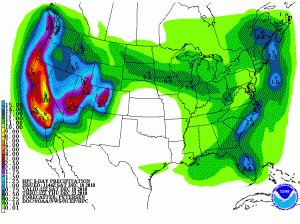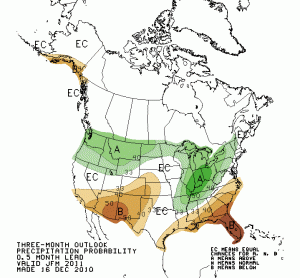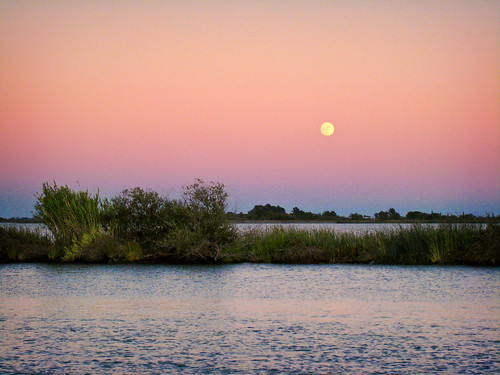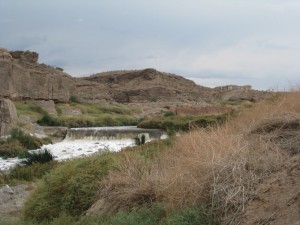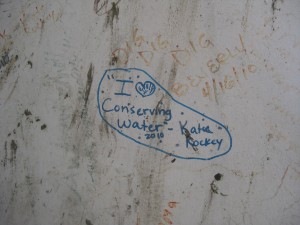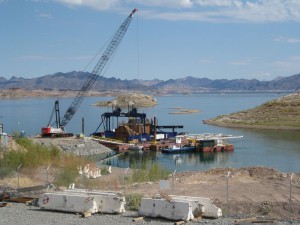U.S. Interior Secretary Ken Salazar and Mexican Environment and Natural Resources Secretary Juan Rafael Elvira Quesada signed an agreement today that, for the first time, allows long-term storage of Mexican Colorado River water in U.S. reservoirs.
It’s an attempt to solve a short-term problem – the inability of Mexican users to take their full allotments because of damage to water distribution infrastructure caused by an April earthquake. Rather than lose the water (Mexico has no large storage facilities), the agreement allows 260,000 acre feet of water to be stored in Lake Mead between now and the end of 2013. When the canals are fixed, the Mexicans can then call for their water.
This is a win for folks in the United States, because the water would keep Lake Mead’s levels higher than they otherwise would be, reducing the risk of a shortage declaration should Mead’s levels drop below 1075 feet above sea level. (260,000 acre feet translates to something in the neighborhood of 3 feet.)
So both sides benefit. But the real importance of the agreement is less in the details, and more in the precedent it sets: it is the first trans-boundary water management agreement that allows Mexican water to be stored in the United States. As such, it will provide a learning experience for possible future arrangements that could be more far-reaching.
In their July 2005 “conservation before shortage” proposal, a group of NGO’s that included the Environmental Defense Fund proposed such trans-boundary agreements to create more flexibility for solving the Colorado’s water management problems.
One of the difficulties in crafting solutions to the Colorado’s growing sustainability problems is the limitation imposed by governmental boundaries – state and tribal lines, as well as the upper and lower basins within the United States, and the U.S.-Mexico border. Legal and political structures make it extraordinarily difficult to manage water across those boundaries – to conserve water in one jurisdiction, for example, that it might be used in another.
Within the lower basin, an approach called “intentionally created surplus” is one attempt to overcome some of these problems. For example, the Drop 2 Reservoir along the All-American Canal will save water in California. It is being funded in part by the Southern Nevada Water Authority in return for the ICS credits, which has the effect of conserving water in California for use in Nevada.
In their announcement today, Salazar and Elvira Quesada said broader negotiations will begin next month on “a comprehensive agreement on Colorado River water management issues, particularly in light of ongoing drought conditions and the prospect of continuing declines in reservoir levels.”
The Environmental Defense Fund’s Jennifer Pitt, one of the key authors of the 2005 proposal that suggested such trans-boundary collaborations, issued this statement today:
Given dire predictions of drought in this region, today’s agreement is a critical step in building the mutual trust and confidence we need to craft additional agreements that deliver a more sustainable water supply for our communities and for the environment.
Some notes on arcane details of the agreement:
- Technically, the agreement doesn’t specify the reservoir, and it could be stored anywhere, but for all practical purposes, we can assume it’ll be in Mead.
- Mexico will pay a 3 percent evaporation cost per year on the water stored.

